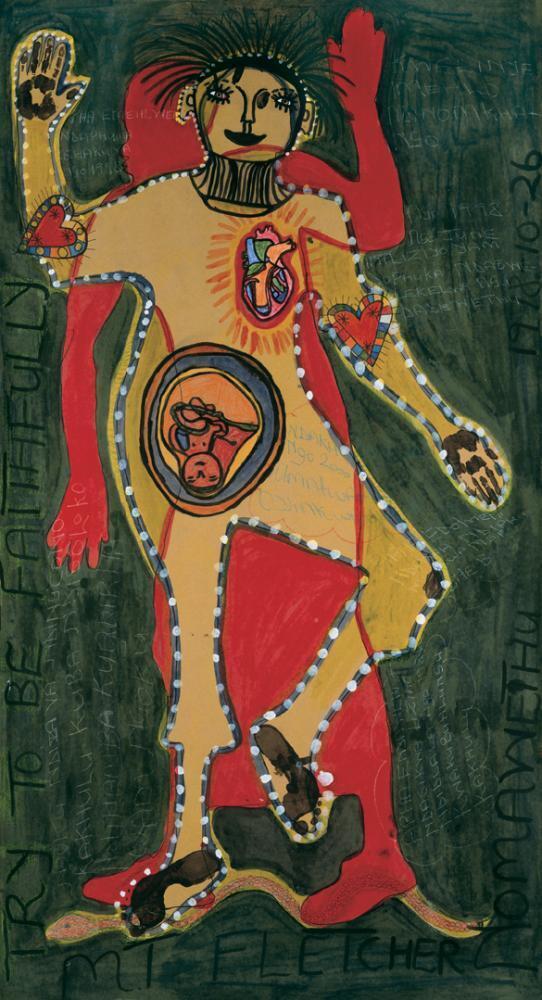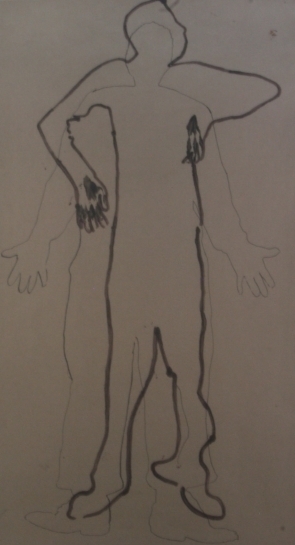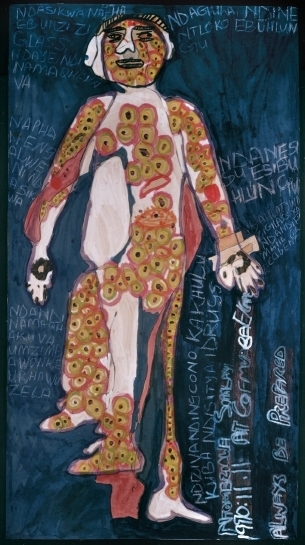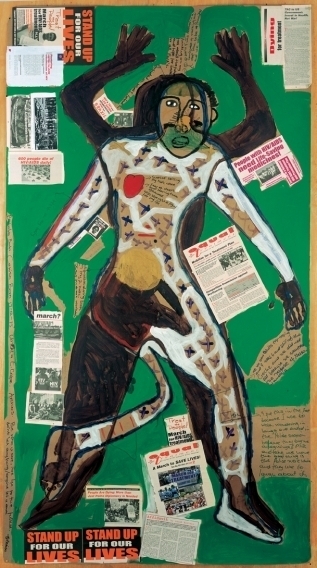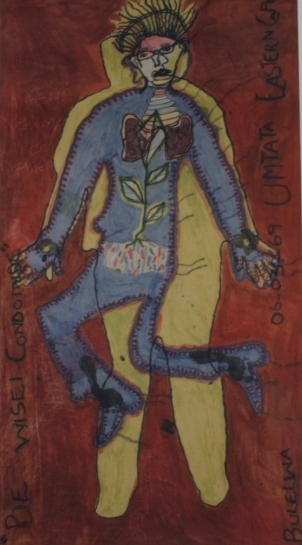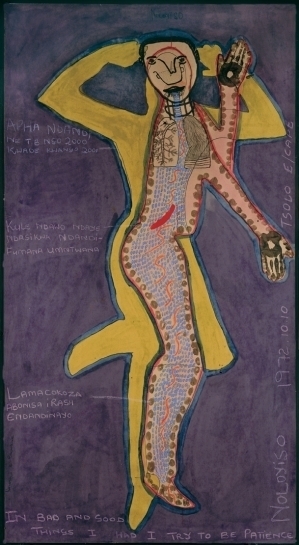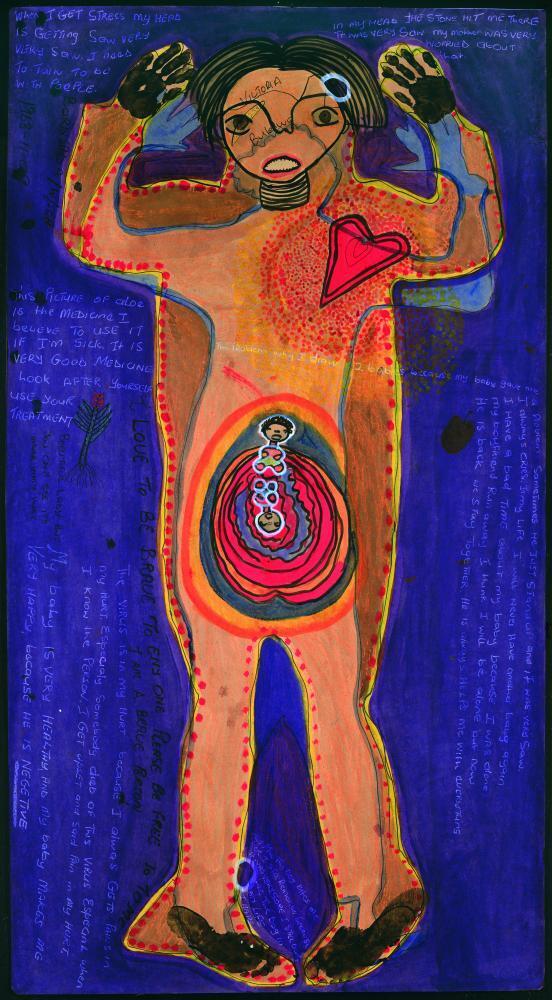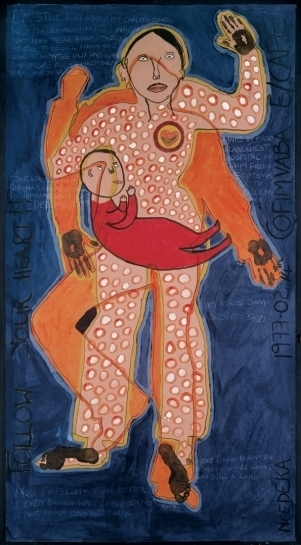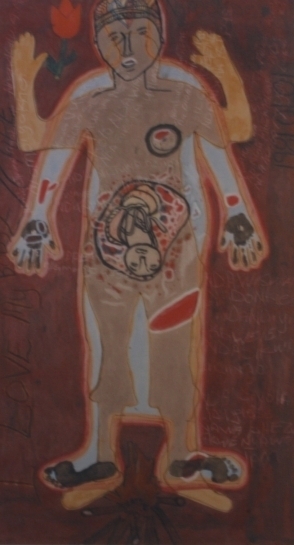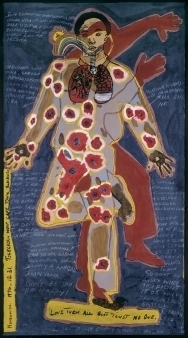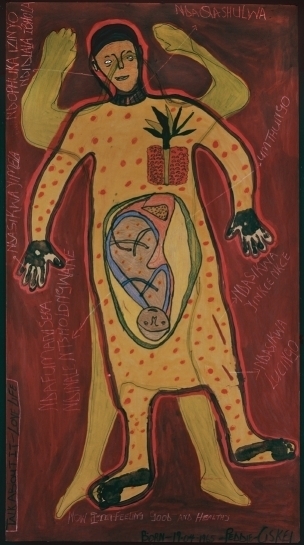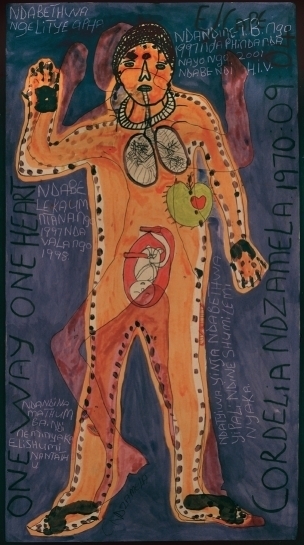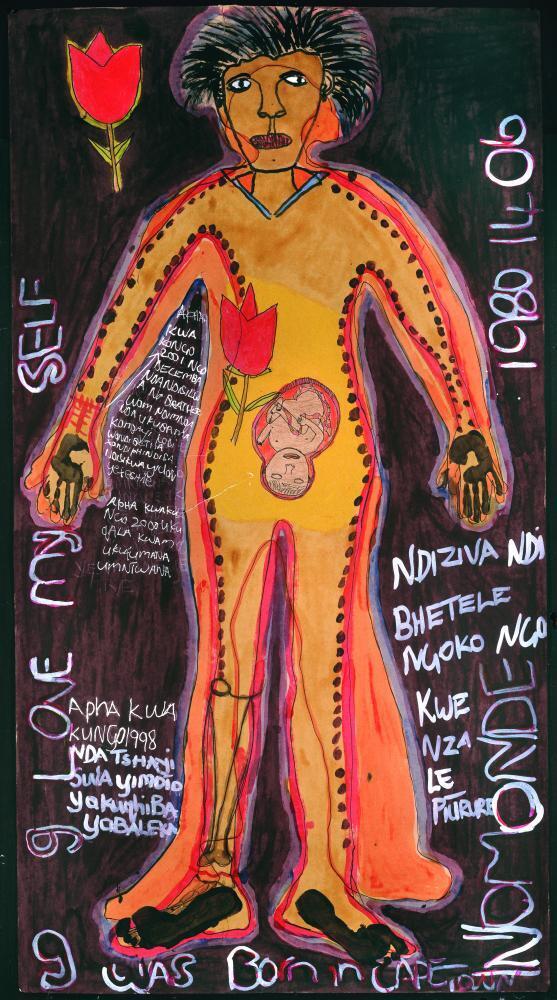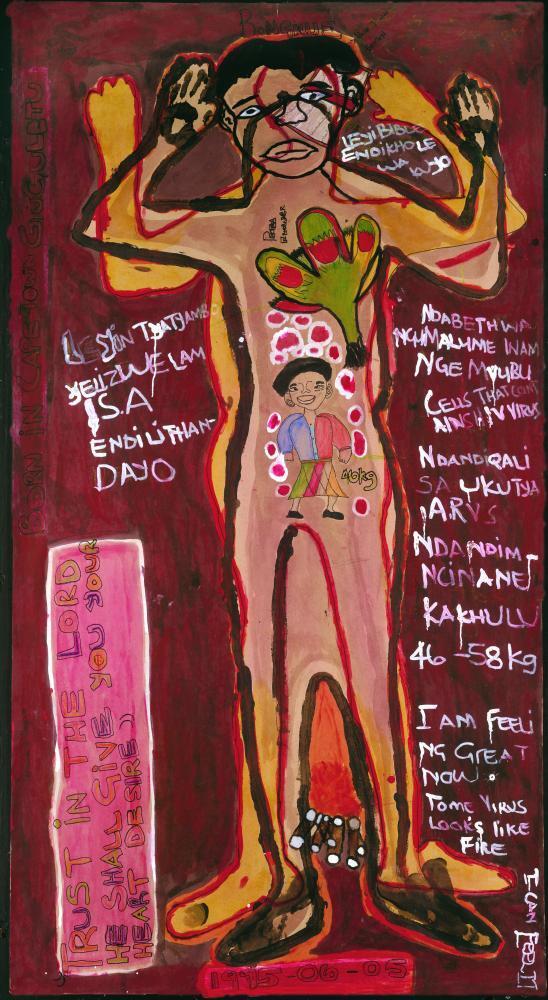Long Life Project Body Maps
| Series information: | Artworks by the Bambanani Women’s Group (2002) The Bambanani Women’s Group is a collective founded in 2002 in Cape Town, South Africa. Its name was derived from the IsiXhosa word for “coming together, holding hands, unifying”. The support group, consisting of thirteen women and one man living with HIV/AIDS, recorded their life stories as they were participating in a Médecins Sans Frontières (MSF) pilot antiretroviral programme. Between 2002 and 2003, under the leadership of Jonathan Morgan and Kylie Thomas (both working for AIDS Society Research Unit at the University of Cape Town at the time), and art instructor Jane Solomon, the group participated in a body mapping workshop; a unique form of art and memory therapy that is a deeply emotive, visceral and personal form of storytelling. The life-sized Body Maps that resulted from the workshops evince courage and hope, and provided a means for each individual to share their personal experiences about living with HIV/AIDS. The works were also documented in the collaborative book Long Life – Positive HIV Stories (2003) that explores how the Long Life Project helped raise awareness and campaigned for the access to antiretroviral treatment within the South African public healthcare sector. To create the Body Maps, participants were assisted to trace a life-sized outline of their bodies and adorned them with colourful symbols and emotive text as a means of visualising the virus and telling their personal histories. Each Body Map bears the name, the place and the date of birth, as well as the handprints and the footprints of its maker. Painted representations of wounds, scars, pregnancies and the vicious HIV virus appear together with text and other subjects of emotional significance. Moreover, each participant selected a symbol of personal power and hope, often taking the form of a flower or a heart, to embody the optimism of the project. Shadowy forms of the participants’ project companions hover in the background behind the main silhouette to underline how crucial societal support is. The Body Maps succeeded in advancing the dialogue about South Africa’s HIV/AIDS epidemic towards achieving equal treatment access. Following broader civil society activism and litigation, the Constitutional Court ruled in 2002 in favour of the Treatment Action Campaign, finding that Nevirapine should be made available at public clinics to pregnant mothers who sought it. Nevirapine is a drug that limits the transfer of HIV to newborns. As a legacy of this judgment, South Africa came to have the largest publicly provided AIDS treatment programme in the world. Limited edition print sets of the original Body Maps were produced and have been exhibited all over the world. The project marked a shift in South Africa from “preparing for death” to “fighting for life” as antiretroviral therapy was progressively made available in public clinics and hospitals around late 2003. Following the Long Life Project, members of the Bambanani Women’s group went on to be trained as field researchers and some have continued to conduct Body Map workshops and presentations for various organisations. The first edition of the print sets, smaller in size than the life-sized originals, was bought by the CCAC Artworks Committee from David Krut in 2004. The prints underwent restoration treatment and framing in 2023, while some had to be reprinted and signed again by the artists, as part of a conservation and research project funded by the Mercury Phoenix Trust. |
